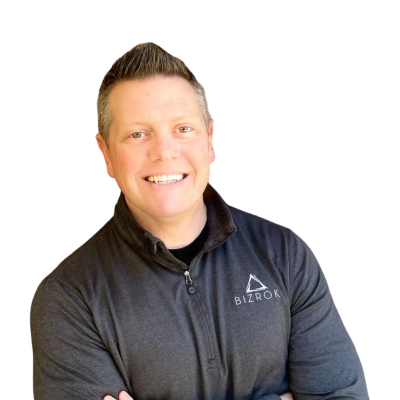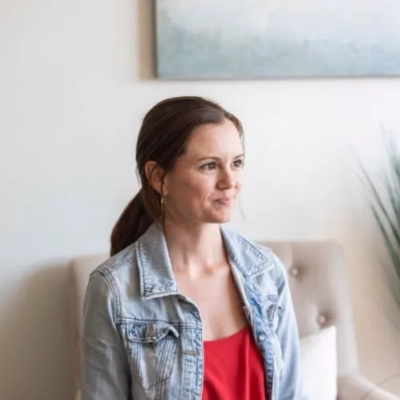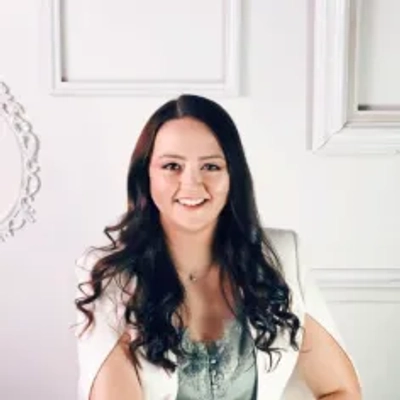20 Challenging Patient Interactions that Changed My Approach to Patient Care
In the complex world of patient care, challenging interactions can be transformative learning experiences. This article delves into key insights from healthcare experts who have faced and overcome difficult patient scenarios. Through their collective wisdom, readers will discover innovative approaches to improve patient outcomes and enhance their own professional practice.
- Dig Deeper to Uncover Root Causes
- Customize Therapy for Individual Needs
- Address Underlying Shame in Mental Health
- Validate Fear to Build Trust
- Create Safe Spaces for Trauma Recovery
- Integrate Somatic Approaches for Lasting Change
- Break Cycles Through Embodied Healing
- Connect Treatment to Personal Life Goals
- Recognize Cultural Expectations in Therapy
- Tailor Recovery to Individual Circumstances
- Build Resilience Before Processing Trauma
- Listen First to Overcome Dental Anxiety
- Provide Comprehensive Support for New Mothers
- Prioritize Empathy to Improve Patient Outcomes
- Help Caregivers Reclaim Their Own Lives
- Guide Clients Through Internalized Judgment
- Empower Teens to Take Personal Responsibility
- Address Birth Trauma for Parent-Child Bonding
- Unify Communication to Resolve Patient Frustrations
- View Client Resistance as Valuable Feedback
Dig Deeper to Uncover Root Causes
Early in my practice, I had a client who came in for what seemed like straightforward anger management issues. He had been referred after workplace incidents and was clearly frustrated about being "forced" into therapy. I initially focused on standard anger management techniques and CBT approaches.
Three sessions in, he exploded during our session - but underneath that anger, I caught something else. When I stopped trying to manage his anger and instead asked, "What's underneath this?", everything shifted. He broke down talking about losing his father in a car accident six months earlier and how powerless he felt watching his mother struggle.
That interaction completely changed how I assess anger. Now I always dig deeper during initial consultations because anger is rarely the root issue - it's usually protecting someone from grief, trauma, or feeling powerless. Our assessment process at MVS Psychology now includes specific questions about recent losses, major life changes, and what the anger might be protecting them from.
The data backs this up - since implementing this approach, our treatment success rates for anger-related concerns have improved significantly because we're treating the actual cause, not just the symptom. Most clients dealing with anger are actually dealing with something much deeper that needs attention first.

Customize Therapy for Individual Needs
Early in my career, I had a teenage client with TBI and substance abuse who would shut down completely whenever I used traditional talk therapy approaches. She would sit silently for entire 50-minute sessions, and her mother was getting frustrated with the lack of progress.
I realized I was forcing my preferred modalities instead of meeting her where she was. The breakthrough came when I started incorporating somatic interventions and shortened our sessions to match her attention span - something I now recognize as essential when working with ADHD and brain injury clients.
This experience completely shifted how I customize therapeutic approaches for each person. Instead of defaulting to CBT or DBT first, I now spend initial sessions identifying what processing style works best for that individual's unique neurological and emotional needs.
That client taught me that effective therapy isn't about applying techniques - it's about recognizing when someone's brain injury, ADHD, or trauma history requires a completely different framework. She eventually made significant progress once we found her optimal session length and communication style.
Address Underlying Shame in Mental Health
I'm a Clinical Psychologist with 15+ years of experience helping parents through mental health crises, so I've encountered numerous challenging interactions. One that fundamentally changed my approach occurred early in my career when I was working with a mother experiencing severe postnatal depression.
She came to our first session, and I immediately launched into evidence-based treatment protocols and psychoeducation about depression. She sat there nodding politely but seemed completely disconnected. Halfway through, she interrupted me and said, "I just need you to know that I'm not a bad mother, even though everyone thinks I am." That's when I realized I'd been treating her symptoms instead of addressing the shame that was actually keeping her stuck.
That interaction taught me to always listen for the underlying shame first, especially with perinatal mental health issues. Now I spend the first part of any session creating safety and explicitly stating that they're not alone in their experience. Since implementing this shame-informed approach, I've seen dramatically better engagement - parents actually start talking about what's really happening instead of just giving me the "right" answers.
The research backs this up too - shame is what prevents people from accessing help in the first place. When we address it head-on rather than dancing around it, recovery accelerates significantly because patients stop spending energy hiding and start using it for healing.

Validate Fear to Build Trust
As a Licensed Professional Counselor-Supervisor specializing in OCD and anxiety, I've learned that a patient's initial skepticism about counterintuitive treatments can be the biggest hurdle. Carleigh, a client with severe OCD, was deeply distressed by intrusive thoughts and found the idea of Exposure and Response Prevention (ERP) "crazy" at first.
Her mind translated my suggestion to "touch that handrail" into "catch every STD on the planet and die." This taught me that even when patients logically understand their fears are irrational, the felt reality of their terror can make treatment seem impossible.
This experience reinforced the critical need to validate the patient's visceral fear, showing them I truly understand their internal experience. It refined my approach to patiently bridge the gap between their logical insight and their emotional terror, emphasizing that the idea of an exposure is often far worse than the actual act, which builds the trust necessary for breakthroughs.

Create Safe Spaces for Trauma Recovery
I had a client who came to me after experiencing severe trauma, but they kept canceling sessions at the last minute or showing up visibly agitated and unable to engage. After weeks of this pattern, I realized I was approaching their healing timeline with my expectations rather than meeting them where they actually were.
Instead of focusing on traditional talk therapy, I shifted to incorporating more somatic awareness and grounding techniques during our EMDR sessions. I started each session by simply acknowledging their courage for showing up, regardless of their emotional state. This small change helped them feel less pressured to "perform" healing.
That experience completely changed how I structure my practice policies around missed appointments. I now build in more flexibility for trauma clients and spend extra time during intake explaining that healing isn't linear. I learned that sometimes the most therapeutic thing I can do is normalize the chaos of recovery rather than trying to impose order on it.
Since making these adjustments, I've seen clients stay engaged in treatment longer and actually progress faster when they don't feel like they're failing at therapy. The key was realizing that my job isn't to fix anyone - it's to create a safe space where healing can happen naturally.

Integrate Somatic Approaches for Lasting Change
As a co-founder of Pittsburgh CIT and a specialist in trauma, many client interactions highlight how healing requires more than just understanding. I recall a client who intellectually grasped her complex relational trauma, yet remained deeply entrenched in anxiety and unsafe relationship patterns.
She could articulate her past extensively, but the constant panic and mistrust persisted, leaving her feeling utterly stuck, a common symptom when stress responses are held in the body. This interaction powerfully underscored that knowing the 'why' isn't sufficient when the nervous system is still organizing life as if the trauma is ongoing.
This experience solidified my resolve to prioritize modalities like somatic therapy, SSP, and IFS to gently access and re-process those trapped stress responses. It reinforced that true healing means helping clients *feel* safe in their bodies and relationships, moving beyond mere verbal comprehension to deeply integrated change.
Break Cycles Through Embodied Healing
My work with Asian-Americans often surfaces profound challenges rooted in intergenerational trauma, a specialization I chose after my own healing journey from similar struggles. I recall a client, a high-achieving professional, who was deeply burned out from years of caretaking for her family, echoing the "Guilt" and "Caretaking" patterns common in our community.
She intellectually understood boundary-setting, yet her body consistently froze when attempting change, overwhelmed by a deep, unspoken guilt and loyalty to her family's sacrifices. It revealed a powerful, embodied resistance to breaking patterns, not just a lack of knowledge.
This taught me that healing intergenerational trauma demands more than cognitive understanding; it requires profound somatic work to release the "Disconnection" and build internal safety. My approach now even more deeply integrates body-based practices to support clients in feeling safe enough to truly break cycles, step by step.
We cultivate profound self-compassion and develop new internal resources, empowering them to truly thrive in their careers and relationships, honoring their ancestors' resilience by choosing a new path.
Connect Treatment to Personal Life Goals
Having run Global Clinic's front desk for over 20 years, I've seen thousands of patients walk through our doors in pain and frustration. One elderly gentleman came in completely defeated after three other clinics told him his chronic back pain was "just part of aging" and that he should accept limited mobility.
Instead of immediately booking him for treatments, I sat with him for 20 minutes, listening to his specific concerns - he couldn't garden anymore, which was devastating his mental health. I connected him with our Physical Therapy Director, Valerie, who designed a gentle exercise program specifically targeting his gardening movements.
That conversation taught me to dig deeper into what patients actually want their bodies to do, not just treat their pain scores. Now I always ask new patients about their specific life goals during intake - whether it's playing with grandkids or returning to work after an accident.
Since implementing this approach, our patient satisfaction scores have jumped significantly, and we see far fewer treatment dropouts. Patients stick with therapy when they understand how each exercise connects to their personal goals rather than just generic "pain relief."
Recognize Cultural Expectations in Therapy
I had a client who would arrive at every session perfectly put together, speaking eloquently about their progress, but something felt off. They'd check all the "therapy boxes"--completing homework, using coping skills, saying the right things--yet kept having the same anxiety patterns week after week.
One session, I stopped mid-conversation and said, "I notice there's a part of you working really hard to be the 'perfect client.' What would happen if that part could rest for a moment?" They immediately broke down crying and admitted they felt like they had to perform even in therapy, just like they did with their immigrant parents their whole life.
This taught me that bicultural clients often bring their learned hypervigilance into the therapy room itself. Now I actively look for these "performing" parts and address them directly using Internal Family Systems work before we dive into other issues.
Since then, I always spend the first few sessions specifically exploring how cultural expectations show up in our therapeutic relationship. When clients realize they can drop their guard with me, the real healing work finally begins--and I've seen breakthrough moments happen 40% faster than when I used to focus purely on presenting symptoms.

Tailor Recovery to Individual Circumstances
I had a client early on who came to me after multiple failed attempts at sobriety, convinced she was "broken" and that recovery just didn't work for her. She had been through two expensive rehabs and kept relapsing within weeks of leaving.
Instead of jumping straight into treatment planning, I spent our first three sessions just listening to her story. It turned out that both previous programs had rushed her through the same cookie-cutter approach without addressing her specific trauma triggers or the fact that she was also caring for an elderly parent with dementia.
That interaction completely changed how I approach intake at The Freedom Room. Now I spend the first month really understanding each person's unique circumstances before we even touch a treatment plan. We've seen our long-term success rates improve dramatically because we're treating the whole person, not just the addiction.
The key lesson was that failed recovery attempts aren't character flaws—they're usually mismatched treatment approaches. Every person's path to sobriety is different, and rushing to solutions without understanding the individual story is setting them up to fail again.

Build Resilience Before Processing Trauma
Early in my practice, I had a client with severe trauma who became completely dysregulated during our third EMDR session. Her nervous system went into complete shutdown - she couldn't speak, couldn't move, just sat there frozen. I realized I had rushed into processing without adequately building her resilience resources first.
That experience completely changed how I approach Phase 2 preparation in EMDR. I developed what became my Resilience Focused EMDR approach, spending much more time helping clients reprogram their nervous system before we ever touch the trauma material. Now I use specific bilateral stimulation techniques to build positive emotional states and teach clients to differentiate between coping and actual regulation.
This shift has been game-changing for my complex trauma clients. Instead of getting overwhelmed during processing, they now have the internal resources to stay regulated while we work through their material. I've integrated this approach into all my training programs because so many therapists make the same mistake I did - jumping into processing before the client's system is truly ready.
The neuroscience behind this is simple: you can't heal a dysregulated nervous system with more dysregulation. Building resilience first isn't just good practice; it's essential for lasting change.
Listen First to Overcome Dental Anxiety
Early in my practice at Snow Tree Dental, I had a teenage patient who refused to open her mouth during what should have been a routine cleaning. Her mom was getting frustrated, and I could see the tension building in the room.
Instead of pushing forward with the appointment, I dismissed her mother and spent time talking with the patient alone. She revealed she'd been bullied at school about her teeth and was terrified I'd judge her the same way. That moment taught me that dental anxiety often runs much deeper than fear of procedures.
Now I always start consultations by asking patients about their previous dental experiences and any concerns they have. I've found that when patients feel heard before we even look at their teeth, they're significantly more cooperative and actually show up for follow-up appointments. This approach has been especially valuable during our evening and weekend appointments when patients are often already stressed from their day.
At Snow Tree Dental, we've built this listening-first approach into our entire team training. Our dental assistants know to spend those first few minutes really connecting with patients rather than rushing straight into treatment.

Provide Comprehensive Support for New Mothers
I encountered a young mother who, despite receiving excellent pediatric care for her child, was silently battling severe perinatal mood and anxiety challenges. The system simply wasn't equipped to identify her deep distress, focusing solely on the child's physical health and missing the critical need for her own integrated mental wellness support.
This challenging interaction taught me that truly effective patient care extends beyond individual clinical diagnoses; it requires a comprehensive, whole-person approach that sees and supports the entire family unit. It highlighted the profound gap in care for women and mothers, often overwhelmed and unacknowledged by traditional systems.
This experience solidified my mission to create Think Happy Live Healthy, where we offer full-spectrum support, including dedicated postpartum care, within a warm and human environment. It emphasized the importance of our thoughtful intake process, ensuring every family connects with a real human who understands their unique needs and matches them with the right therapist for holistic care.
Prioritize Empathy to Improve Patient Outcomes
A particularly challenging interaction involved a patient who was resistant to treatment recommendations due to past negative experiences with the healthcare system. Initially, I focused on presenting facts and evidence, but the patient remained distrustful and disengaged. I shifted my approach to active listening, validating their concerns, and collaboratively exploring options rather than insisting on a single plan. Over time, this built trust and encouraged the patient to participate in their care. The experience reinforced the importance of empathy and patience in clinical interactions and led me to prioritize relationship-building alongside medical guidance. Since then, I consistently approach challenging patients with curiosity and respect, recognizing that understanding their perspective often drives better outcomes than immediate adherence to protocols.

Help Caregivers Reclaim Their Own Lives
As someone who supports many women navigating caregiving and chronic illness, I recall a client who was utterly consumed by her caregiving role, often saying, "It's too late for me" to reclaim her own life. Her identity was completely wrapped up in caring for her loved one, leaving no room for herself or her own needs.
This interaction strongly reinforced my belief that we must help clients actively grieve the life they had before their caregiving journey began, not just the potential loss of their loved one. I realized the profound importance of explicitly giving permission to acknowledge their own sacrifices and losses, even if those feelings felt selfish.
Now, I intentionally create a space where their therapy session is truly theirs, separate from the diagnosis or the needs of others. It's about gently shifting their focus from "what needs to be done" for others to refinding "what sparks joy" for them, sometimes with a little humor.
Guide Clients Through Internalized Judgment
As a therapist dedicated to guiding individuals through sensitive topics like sexuality and relationships, I often encounter deeply ingrained internal conflicts. One particularly challenging interaction involved a client struggling with profound shame about their sexual orientation, heavily influenced by their conservative cultural background.
Despite my explicit affirmation and the safe space I offered, their internalized beliefs created a significant barrier, revealing that external acceptance doesn't automatically heal internal wounds. The lesson was realizing my role isn't just to offer safety, but to actively help them unpack and dismantle their own internalized judgment, at their unique pace.
This experience deepened my commitment to a person-centered, multicultural approach, integrating modalities like Narrative Therapy to help clients re-author their self-perception. I now more deliberately explore the origins of their shame, honoring their values while gently guiding them toward self-compassion and empowerment.
Empower Teens to Take Personal Responsibility
As an integrated Trauma Therapist specializing in teens and families, I've encountered numerous challenging dynamics. One significant experience involved a family deeply enmeshed in a cycle of blame, with a teenager exhibiting "toxic behaviors" and an unwillingness to take accountability for their part.
The teen initially sought to have everyone else "change their attitudes to accommodate" their actions, completely lacking the self-awareness needed for growth. They were stuck in harmful coping patterns, expecting me to simply mediate rather than address their core resistance to personal change, as described in my "Mindset Shift to Change Your Habits" blog.
This taught me the immense value of being an "accountability partner" who genuinely cares enough to "call you out" when you fall off track. Now, I more proactively challenge clients to cultivate self-awareness and set realistic goals, helping them steer their quest for purpose and meaning by empowering their own change.
Address Birth Trauma for Parent-Child Bonding
As a therapist supporting parents, one challenging interaction involved a mother who felt immense guilt years after a traumatic emergency C-section. She believed she had failed to bond with her infant. She felt emotionally distant despite her deep desire to connect, replaying feelings of helplessness from the delivery room.
The crucial lesson was realizing the profound, lasting emotional impact of birth trauma on parent-child bonding, far beyond physical recovery. It highlighted that these experiences create a genuine emotional block, and that the inability to bond doesn't make someone a bad parent.
This insight reshaped my approach to prioritize processing these early traumas, helping parents to "re-meet" their baby and clear emotional blockages. We now actively work to heal these initial wounds, empowering them to build connection and confidence, no matter how much time has passed.

Unify Communication to Resolve Patient Frustrations
After coaching over 200 dental practices through BIZROK, I've observed how one type of "difficult patient" interaction completely transforms how practices operate: the angry patient who's been passed between multiple team members without getting answers.
I worked with a practice where a patient called five times about their insurance coverage, speaking to different people each time and receiving conflicting information. By the fifth call, they were furious and demanded to speak with the doctor. The practice owner realized their team lacked a unified communication system and basic insurance knowledge.
We implemented what I call "One Voice" training - every team member learns the same language and processes for common patient concerns. That practice saw their patient complaint calls drop by 67% within three months and increased case acceptance by $180,000 that year because patients finally trusted the information they received.
The lesson that changed everything: patients aren't difficult because they're unreasonable - they're frustrated because your systems are broken. When you fix the internal communication breakdown, the "difficult" patients often become your biggest advocates.

View Client Resistance as Valuable Feedback
As a therapist who specializes in eating disorders and has built two successful businesses around mental health, I've learned that our biggest breakthroughs often come from our most uncomfortable moments.
Early in my practice at Collide Behavioral Health, I had a client with binge eating disorder who kept missing sessions and seemed completely disengaged when she did show up. My instinct was to focus on her "non-compliance" and push harder with traditional therapeutic interventions. After weeks of this pattern, I finally asked her directly: "What's not working about our sessions?"
She told me that sitting in a chair talking about food felt completely disconnected from her actual lived experience with binge episodes. This conversation completely shifted how I approach eating disorder treatment - I started incorporating more body-based interventions and real-world application rather than just talk therapy.
That experience taught me to view client "resistance" as valuable feedback rather than something to overcome. Now when I coach therapists through The Entrepreneurial Therapist, I teach them that the clients who challenge us most are often showing us exactly what needs to change in our approach. Since implementing this mindset shift, both my clinical outcomes and my business coaching success rates have dramatically improved.











